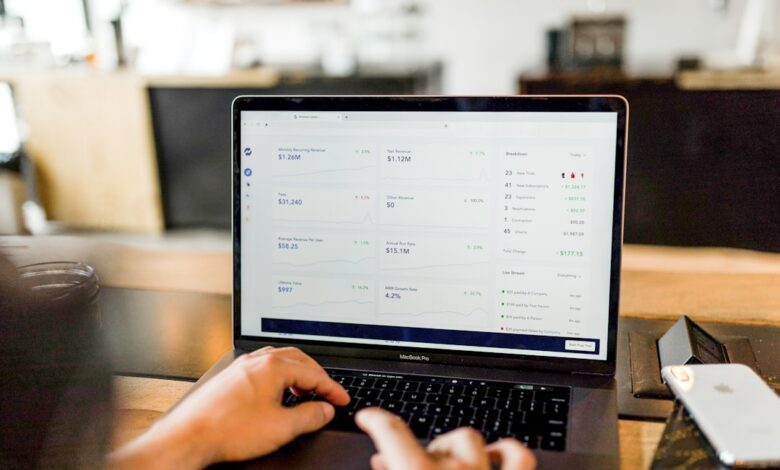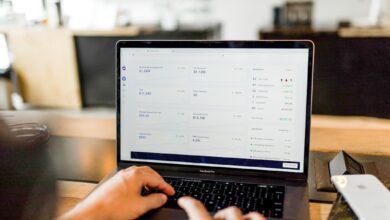Metals in Motion: Navigating Industrial Demand and Investment Dynamics in a Changing Economy

Metals play a crucial role in both the industrial landscape and investment markets, serving as essential components in technological advancements and economic stability. This article delves into various aspects of the metals market, starting with silver, which holds a unique position as both a vital industrial resource and a popular investment vehicle. We will explore how copper prices serve as a barometer for global economic health, reflecting trends and shifts in demand. Additionally, the growing emphasis on green energy technologies is reshaping the demand for rare earth metals, highlighting the intersection of sustainability and market dynamics.
As we navigate the complexities of metal investments, we will compare platinum and palladium to determine which metal presents a more lucrative opportunity for investors. Furthermore, we will discuss the importance of metals in diversifying investment portfolios, particularly in the context of inflation and its impact on the prices of precious and industrial metals. Looking ahead, we will examine the evolving role of aluminum in a sustainable economy and the influence of mining regulations on metal prices. Join us as we uncover the multifaceted world of metals and their significance in both industrial applications and investment strategies.
- 1. **Silver's Dual Role: Industrial Applications and Investment Opportunities**
- 2. **Copper as an Economic Barometer: Analyzing Price Trends and Global Indicators**
1. **Silver's Dual Role: Industrial Applications and Investment Opportunities**
Silver plays a unique and significant role in both industrial applications and investment markets, setting it apart from many other precious metals. As a highly conductive element, silver is extensively utilized in various industries, including electronics, photovoltaics, medical devices, and automotive manufacturing. Its properties make it an essential component in the production of solar panels, where it enhances energy efficiency. Additionally, silver's antimicrobial qualities contribute to its use in healthcare products, further expanding its industrial footprint.
On the investment side, silver is often viewed as a safe-haven asset, similar to gold. Investors turn to silver during periods of economic uncertainty or inflation, as it tends to retain value and can act as a hedge against currency fluctuations. The metal's relatively lower price compared to gold makes it an attractive entry point for individual investors looking to diversify their portfolios. Furthermore, silver has a unique position in the precious metals market due to its dual functionality—serving both as a valuable commodity in industrial applications and as a financial asset in investment strategies.
The interplay between silver's industrial demand and its investment appeal creates a dynamic market that can be influenced by various factors, including technological advancements, economic conditions, and geopolitical events. As industries increasingly adopt sustainable practices and renewable energy technologies, the demand for silver in industrial applications is expected to grow, potentially driving up its value as an investment. Consequently, understanding this dual role is crucial for investors and industry stakeholders alike, as shifts in one sector can have significant implications for the other.
Silver plays a multifaceted role in both industrial and investment markets, making it a unique asset in the metals sector. In the industrial realm, silver is prized for its exceptional conductivity and antibacterial properties, finding applications in electronics, solar panels, and medical devices. As technology advances and demand for renewable energy solutions grows, particularly in solar energy, the industrial use of silver is expected to expand significantly. This rising demand is often mirrored in investment markets, where silver is viewed as a safe-haven asset during times of economic uncertainty, similar to gold. Investors flock to silver during inflationary periods or market volatility, driving up its price and reinforcing its status as a store of value.
Copper prices serve as a barometer for global economic health due to its extensive use in construction, electrical wiring, and manufacturing. When economic activity is robust, demand for copper increases, leading to higher prices. Conversely, a slowdown in economic growth typically results in reduced demand and lower prices. Analysts closely monitor copper price trends to gauge economic sentiment, making it a critical indicator for investors and policymakers alike.
The push for green energy technologies is significantly impacting the demand for rare earth metals, which are essential for manufacturing high-tech devices, batteries, and renewable energy systems. The transition to electric vehicles and other sustainable technologies is driving up the need for these metals, as they are critical for the production of magnets, catalysts, and various electronic components. This growing demand raises questions about supply chain sustainability and the geopolitical implications of rare earth metal production, further highlighting their importance in the global market.
When comparing platinum and palladium as investment options, each metal has its unique strengths and weaknesses. Platinum, traditionally used in jewelry and industrial applications like catalytic converters, has faced volatility due to fluctuating demand and mining challenges. Palladium, on the other hand, has seen heightened demand due to its role in gasoline-powered vehicles and stricter emissions regulations. Investors must weigh factors such as supply constraints, market trends, and potential future applications when determining which metal presents a more favorable investment opportunity.
Metals also play a crucial role in diversifying investment portfolios. Including a mix of precious and industrial metals can help mitigate risk and provide a hedge against market fluctuations. As economic conditions change, different metals may respond uniquely, allowing investors to balance their exposure across various sectors.
Inflation significantly impacts the prices of both precious and industrial metals. As inflation rises, the purchasing power of currency diminishes, often leading investors to seek out tangible assets like metals, which can preserve value over time. This increased demand can drive prices higher, creating a feedback loop that further reinforces the metal's role as an inflation hedge.
Looking to the future, aluminum is poised to play a vital role in a sustainable economy. Its lightweight and recyclable properties make it an ideal candidate for applications in energy-efficient transportation and packaging solutions. As industries pivot towards sustainability, the demand for aluminum is expected to rise, potentially leading to innovations in recycling and production methods that further enhance its environmental benefits.
Lastly, mining regulations have a significant impact on metal prices. Stricter regulations can lead to increased operational costs and reduced production, which may constrain supply and drive prices higher. Conversely, supportive regulatory environments can facilitate investment and expansion in mining operations, potentially stabilizing or lowering prices. As global demand for metals continues to evolve, the balancing act between regulation and market forces will remain a critical factor in determining price dynamics.
2. **Copper as an Economic Barometer: Analyzing Price Trends and Global Indicators**
Copper, often referred to as "Dr. Copper," serves as a critical economic indicator due to its widespread use in various industries, including construction, electrical equipment, and manufacturing. The price of copper is closely monitored by economists and investors alike, as it tends to reflect broader economic health and activity levels.
When demand for copper rises, it typically signifies robust economic growth, as construction and manufacturing sectors ramp up production. Conversely, declining copper prices can indicate a slowdown in economic activity, as reduced demand from these sectors suggests lower confidence in future growth. This relationship is particularly evident in major economies like China, which is the largest consumer of copper, accounting for nearly half of global demand. Fluctuations in copper prices often correlate with China's economic data, such as GDP growth rates and construction activity, making it a vital metric for assessing global economic trends.
In addition to direct demand from industrial applications, copper prices are influenced by macroeconomic factors like inflation, interest rates, and currency fluctuations. For instance, during periods of inflation, copper prices may rise as investors seek tangible assets, which can drive demand further. Additionally, geopolitical events, trade policies, and supply chain disruptions can create volatility in copper prices, further complicating their role as an economic barometer.
Recent trends have shown that as economies recover from downturns—such as those experienced during the COVID-19 pandemic—copper prices often surge, driven by increased infrastructure spending and a shift toward sustainable energy solutions. The growing emphasis on electric vehicles (EVs) and renewable energy technologies, which require significant copper inputs, is expected to sustain demand in the coming years.
Overall, copper not only plays a pivotal role in industrial applications but also serves as a valuable tool for gauging global economic health, with its price trends offering insights into the broader economic landscape. Investors and analysts alike continue to watch copper closely, understanding that its fluctuations can signify much more than just supply and demand dynamics—it reflects the pulse of the global economy.
In conclusion, the intricate dynamics of metal markets reveal the multifaceted roles these resources play in both industrial applications and investment strategies. Silver stands out for its duality, serving as both a critical component in various industries and a sought-after investment asset. Meanwhile, copper prices provide valuable insights into global economic health, acting as a barometer for growth and demand. The rise of green energy technologies further intensifies the demand for rare earth metals, reflecting a shift towards sustainability that is reshaping investment landscapes.
When comparing platinum and palladium, investors must weigh the unique characteristics and market conditions of each metal, considering factors such as supply constraints and technological advancements. Additionally, metals serve as a vital tool for diversifying investment portfolios, offering a hedge against inflation that can significantly impact their prices.
As the world moves toward a more sustainable economy, aluminum's role will likely expand, driven by its lightweight properties and recyclability. However, the complexities of mining regulations must be navigated carefully, as they can significantly influence metal prices and investment viability.
Overall, understanding these interconnections is essential for investors and industries alike. By recognizing the interplay between industrial demand, economic indicators, and regulatory frameworks, stakeholders can make informed decisions in a rapidly evolving market landscape. The future of metals, shaped by technological advancements and sustainability initiatives, promises to be both challenging and rewarding for those who engage with it strategically.





